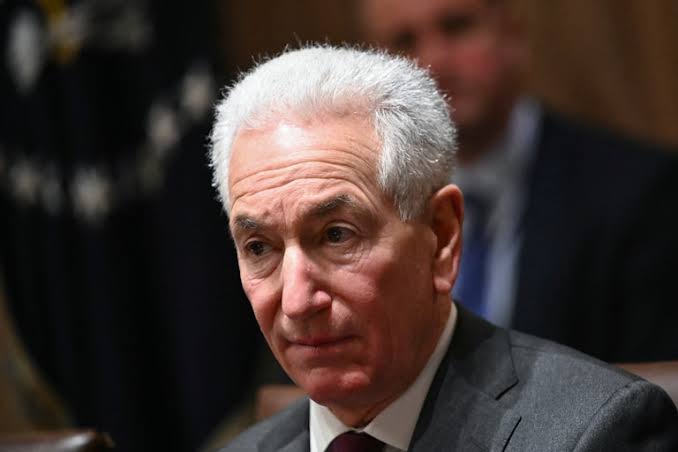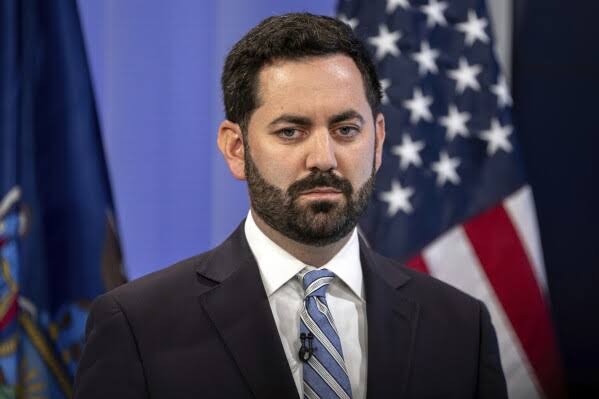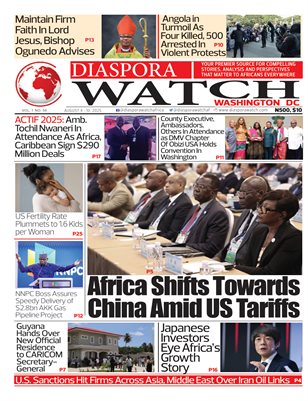Politics
Kenya Rocked by Deadly Protests Over Economic Hardship

At least eight people have been confirmed dead in Kenya following widespread protests against soaring living costs, unemployment, and alleged government corruption.
The unrest has escalated into violent clashes between demonstrators and security forces, with eyewitnesses reporting chaotic scenes as police deployed tear gas and live ammunition to disperse crowds in major cities.
The protests reflect public outrage over inflation that has rendered basic commodities unaffordable.
Demonstrators accuse the government of failing to provide relief or accountability, particularly in light of persistent allegations of corruption and mismanagement.
Hospitals in affected areas have been overwhelmed with casualties, including both protesters and security personnel.
The Kenyan government has condemned the violence and urged citizens to exercise their rights peacefully.
Authorities have promised investigations into the fatalities, but many remain skeptical about whether justice will be served. Human rights organizations have decrying what they describe as excessive force by law enforcement.
Many fear that without meaningful engagement and structural reform, the unrest may continue.
The situation continues to unfold, with many calling for transparency, accountability, and a commitment to upholding civil rights.
Politics
France Summons US Ambassador Over Allegations of Rising Antisemitism

France Summons US Ambassador Over Allegations of Rising Antisemitism
France has said it will summon the United States Ambassador to Paris, Charles Kushner, following remarks the diplomat made accusing French authorities of failing to address a surge in antisemitism linked to the Gaza war.
In a strongly worded statement on Sunday, the French foreign ministry described Kushner’s comments as “unacceptable” and a breach of diplomatic convention, stressing that the envoy would appear before officials on Monday.
Kushner, who is Jewish and the father-in-law of US President Donald Trump’s daughter Ivanka, made the claims in an open letter to President Emmanuel Macron published in the Wall Street Journal.
He alleged that Jews in France faced “daily assaults,” vandalism of synagogues, schools, and businesses, and warned of a “long-standing scar” of antisemitism in French society.
The ambassador also urged Macron to tone down his criticism of Israel while offering to collaborate on what he described as a “serious plan” to confront the menace.
Paris swiftly dismissed the accusations, noting that France has stepped up security around Jewish institutions and categorically rejecting the notion that it tolerates antisemitism.
“France firmly refutes these latest allegations,” the foreign ministry said. “Since the 1961 Vienna Convention, ambassadors are not permitted to interfere in the internal affairs of the host country.”
Kushner’s intervention comes on the heels of a letter from Israeli Prime Minister Benjamin Netanyahu, who accused Macron of fuelling antisemitism by pushing for international recognition of a Palestinian state.
France has announced plans to formally recognise Palestine in September, with Macron insisting that “there is no alternative” to a two-state solution that guarantees Israel’s security and Palestine’s viability.
The exchange underscores growing tensions between Paris, Washington, and Tel Aviv over the Gaza war, which erupted after Hamas attacked southern Israel on 7 October 2023, killing about 1,200 people and taking more than 250 hostage.
Israel’s military response has since left over 60,000 dead in Gaza, according to the enclave’s Hamas-run health ministry, with famine recently declared in parts of the territory.
Despite these humanitarian concerns, Israel continues to deny claims of starvation in Gaza, branding a UN-backed report on food insecurity an “outright lie.”
For France, however, the diplomatic row with Washington threatens to overshadow its domestic efforts to tackle antisemitism while balancing a firm stance on the Middle East peace process.
Politics
Trump’s Tax Bill Splits New York as Lawler Goes on Offensive

Trump’s Tax Bill Splits New York as Lawler Goes on Offensive
In a bold political gamble, Republican Congressman Mike Lawler has become the first House GOP member to publicly campaign on President Donald Trump’s sweeping tax-and-spend law, rolling out five new ads that frame the controversial legislation as a win for ordinary Americans.
Lawler, who represents a suburban New York swing district and faces a tough re-election battle next year, is leaning heavily on provisions of the law tied to Medicaid, tax cuts and affordability measures.
His campaign strategy is seen as high-risk but potentially trendsetting for Republicans seeking to defend the law in the face of fierce Democratic attacks.
The commercials — to run on digital platforms like YouTube — promote the law for strengthening Medicaid through work requirements for adult recipients, while barring undocumented immigrants from exploiting state resources.
Other ads highlight expanded child tax credits, higher state and local tax deduction caps, and the elimination of Social Security taxes for many retirees. One spot frames the law as “investing in Main Street, not Wall Street.”
“The reason why Democrats are messaging the way that they are is because they’re trying to frame this as class warfare,” Lawler told reporters.
“It’s important to explain it in a way voters can understand. You have to be on the offensive.”
But Democrats are not holding back. The Democratic Congressional Campaign Committee (DCCC) has launched its own ads, accusing Lawler of “gutting Medicaid” and putting hospitals at risk.
“Mike Lawler is a liar who doesn’t care about New Yorkers,” said DCCC spokesperson Nebeyatt Betre, alleging the law benefits billionaires at the expense of working families.
Critics argue the law’s cuts to Medicaid and federal nutrition programmes could devastate New York’s health system.
Governor Kathy Hochul has warned the measure could eliminate 34,000 hospital jobs and strip $14.3 billion from the state’s economy.
A Siena University poll showed 69 percent of New Yorkers fear rural hospitals will be hardest hit.
Despite the backlash, Lawler’s allies say the campaign is smart timing. “Too often we find ourselves in a defensive posture,” said GOP strategist Dave Catalfamo.
“It’s smart to shape the narrative now.”
Lawler, who dropped a bid for New York governor earlier this year, is banking on a war chest of $2.2 million to defend his seat.
At least seven Democrats have already declared interest in challenging him, underscoring the high stakes.
For the GOP, Lawler’s move could prove a litmus test: whether Republicans can successfully sell Trump’s unpopular legislation in purple districts — or whether it becomes a political albatross come Election Day.
Politics
Mali Junta Arrests French National Over Alleged Espionage, Coup Plot

Mali Junta Arrests French National Over Alleged Espionage, Coup Plot
Mali’s military authorities have announced the arrest of a French national accused of spying for Paris in a plot to destabilise the West African nation.
The junta, in a statement broadcast on national television late Thursday, identified the suspect as Yann Vezilier, whom it alleged was working “on behalf of the French intelligence service.”
His image was displayed alongside that of several senior Malian generals recently detained over an alleged coup attempt.
“The conspiracy has been foiled with the arrests of those involved,” Mali’s Security Minister, Gen Daoud Aly Mohammedine, said in the televised address.
France, Mali’s former colonial power, has yet to comment on the arrest or the allegations. Mr Vezilier has also not publicly responded to the accusations.
Gen Mohammedine further disclosed that “fringe elements of the Malian armed security forces” were among those arrested, accusing them of plotting to destabilise state institutions with the backing of “foreign states.”
Two top army generals, including Gen Abass Dembele, the recently dismissed governor of Mopti region, are among those being held. Security sources told AFP that at least 55 soldiers have been arrested in connection with the alleged coup attempt.
The minister added that investigations were ongoing to track “possible accomplices” but assured the public that “the situation is completely under control.”
The development comes amid growing political tension in Mali.
In recent weeks, former prime ministers Moussa Mara and Choguel Maïga have been arrested on charges ranging from embezzlement to damaging the reputation of the state. Mara, who has been an outspoken critic of the junta, has been in detention since August 1.
The junta led by Gen Asimi Goïta, who seized power in coups in 2020 and 2021, has come under increasing pressure over its prolonged rule.
Though Goïta promised elections last year, none have been held. Instead, the transition was extended by another five years in July, effectively allowing him to stay in power until 2030.
Mali, alongside Niger and Burkina Faso, has turned to Russia for security support after severing ties with France, but jihadist attacks have continued to escalate, deepening the country’s crisis.
























